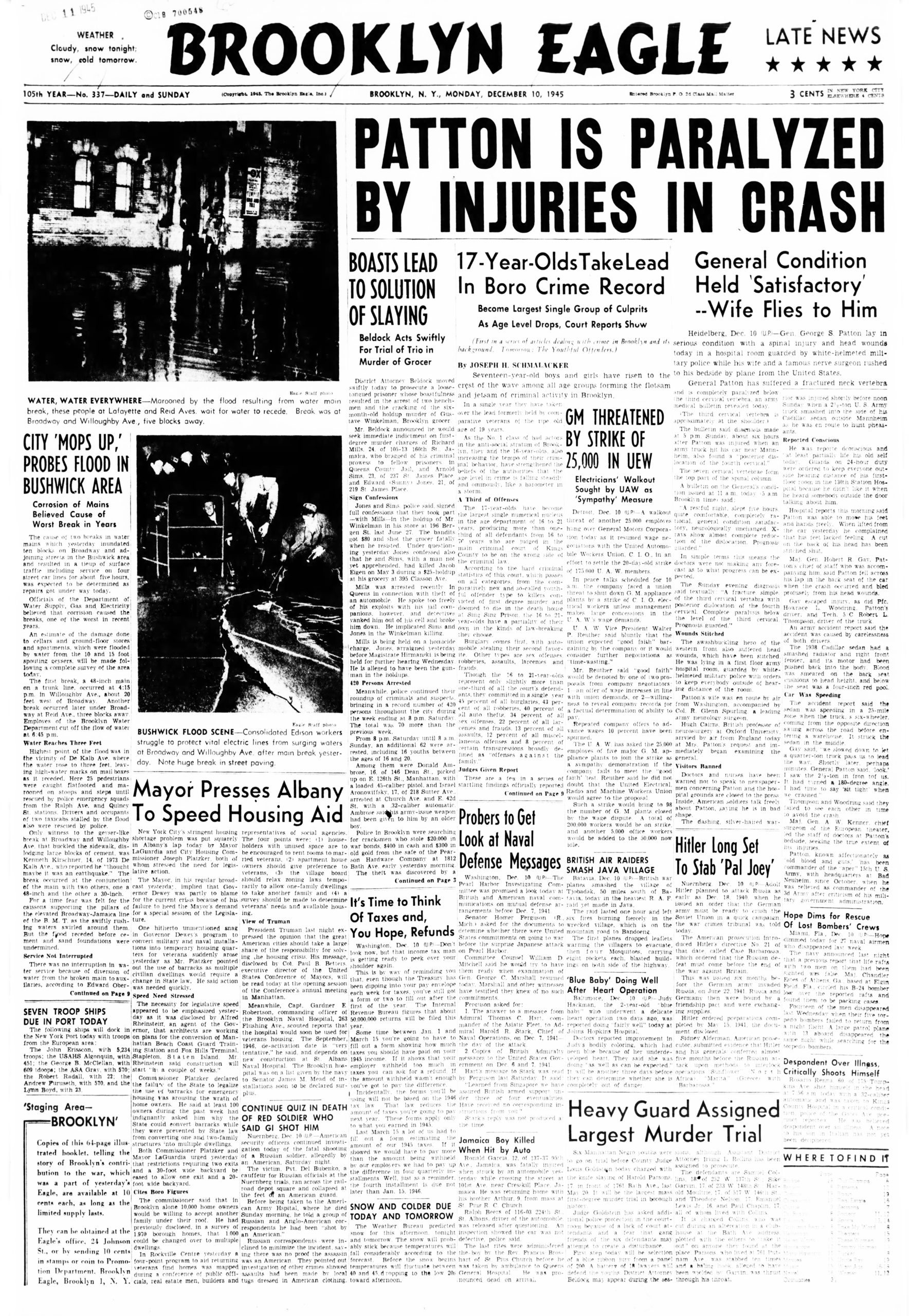December 10: ON THIS DAY IN HISTORY

ON THIS DAY IN 1880, the Brooklyn Daily Eagle reported, “Experiments made in the West, where the telephone came earlier into general use than in this part of the country, have demonstrated the possibility of extending telephonic communication between points far more widely separated than the public has any idea of. Chicago and Milwaukee, about the same distance apart as New York and Philadelphia, have for some time been connected. From St. Louis recently a single line to Omaha, a distance of over 400 miles, was sufficient to make communication fairly intelligible, and the success of the experiment was encouraging to the belief that with further improvements the limit can be indefinitely extended. A company is in the process of incorporation in New York to talk up the subject of remote telephoning, and connect New York with all the principal cities of the state … A series of lines will connect New York with the river towns, those of Long Island, and radiate to the Canadian frontier. This information, which five years ago would have seemed incredible, now causes no wonder.”
***
ON THIS DAY IN 1897, the Eagle reported, “The city officials are now making arrangements for the proper observance of the actual consolidation of Brooklyn and New York. Whether the exercises will take the form of a wake or a celebration has not as yet been decided. It is likely also that this point will not be definitely determined, for it seems to be the desire of the mayor and the other officials to simply and fitly observe the formal passing away of the old city into the new and not to give any vent to their feelings regarding the birth of the greater city.”

Brooklyn Boro
View MoreNew York City’s most populous borough, Brooklyn, is home to nearly 2.6 million residents. If Brooklyn were an independent city it would be the fourth largest city in the United States. While Brooklyn has become the epitome of ‘cool and hip’ in recent years, for those that were born here, raised families here and improved communities over the years, Brooklyn has never been ‘uncool’.